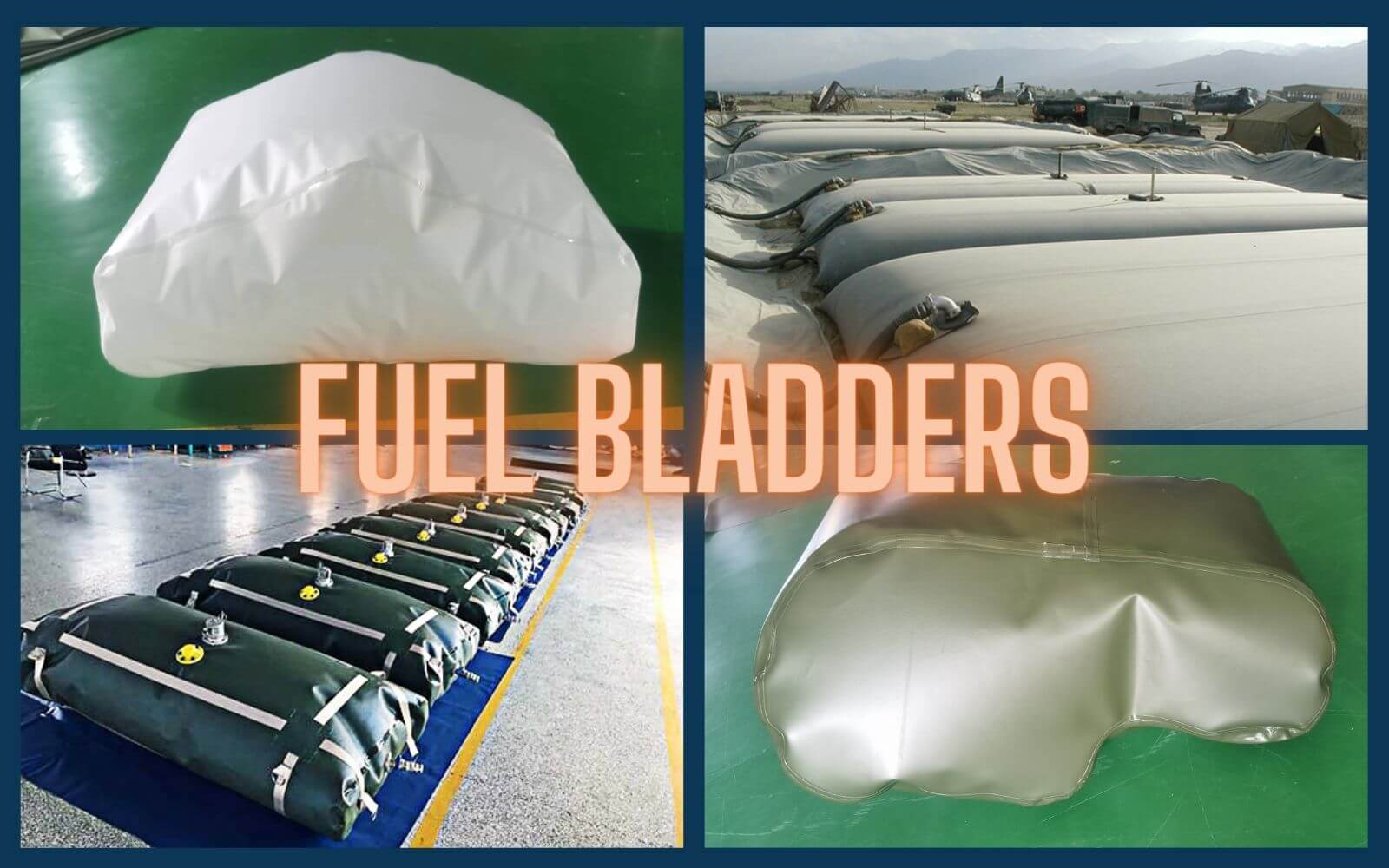FUEL BLADDERS
For fuel storage and transport, innovation leads developing more solutions to provide safer and more efficient way. One such innovation is the fuel bladder,also call fuel cell, collapsible fuel tank. In this article, we will dive into the world of fuel bladder, on its purpose, benefits, and applications.
- What is a Fuel Bladder?
Fuel bladders, also known as a fuel cell or collapsible fuel tank, is a flexible container designed for the safe storage and transportation of various types of fuels. These bladders are typically made from high-quality materials that are compatible to various fuels, including the diesel, gasoline(include JP-8), crude oil, etc.
- How Does It Work?
Fuel bladder works on a simple, but effective principle. It designs to hold fuel securely in a flexible, airtight enclosure.
1. While fuel consumed, the bladder contracts to prevent air or moisture from entering the tank, thereby reducing the risk of contamination.
2. Sometimes, the fuel bladder tank equips with the anti-splash foams, like in the boat, aircraft. In those situation, the bladder tansk place inside the rigid tanks to prevent leakage and easily to repair when emergency happened.
- Enhanced Portability
One of the primary advantage of fuel bladder is portability. Comparing with traditional rigid fuel tanks, fuel bladder can use in limited places or mobility is needed.
- Fuel Conservation
Fuel bladder bags can minimize fuel wastage. Their flexible property allows them to adapt to the changing volume of fuel, reducing the chances of sloshing and evaporation. This means more fuel can be effectively utilized, making them an eco-friendly option.
- Custom Available
Fuel bladder tank, size from 5L to 1,000,000L, standard sizes: 100L, 500L, 1000L, 5000L, 10,000L, 20,000L, etc. Other sizes can customize if needed. No matter what size request on the site, factory can provide custom services. Besides the size, the thickness of material, fittings, shape, they all can customize.
- Durability
Fuel bladder bags designs to withstand harsh environmental conditions, including extreme temperatures(working temperature: -40~90 celsius degree) and rugged terrains. They are made from robust TPU materials that resist punctures and abrasions, the lifespan of the bag is over 10 years.
- Cost-Effective
Compared to traditional rigid fuel tanks, fuel bladders are often more cost-effective. They are relatively inexpensive to manufacture and maintain, making them an economical choice for fuel storage and transportation.
Military fuel bladder widely uses in military sites, becuase of its portability and compatibilty. Usually use for refueling aircraft, vehicles, and generators in remote site or temporary bases.
In the aviation industry, fuel bladder bags are employed to store and transport aviation fuels at remote airports and airfields, ensuring a constant supply of fuel for aircraft. And cell fuel bladder bags also use on the aircraft to prevent leakage or use as auxiliary fuel storage bags.
Boats and ships often use marine fuel bladder as auxiliary fuel storage. This allows vessels carrying more fuel.
During emergencies such as natural disasters, fuel bladders can provide a quick and efficient way to store and distribute fuel to power generators, vehicles, and equipment.
In conclusion, a fuel bladder is a innovative solution for the safe storage & transport of fuel. Its flexibility, durability, and cost-effectiveness make it a valuable asset in various industries, including the military, aviation, marine, and emergency response sectors. It also provides enhancing fuel efficiency, reducing waste, and ensuring a consistent fuel supply, even in harsh conditions.
1. Can fuel bladder bags use for long-term fuel storage?
- Yes, they design for temporary and long-term fuel storage&transportation, depending on your specific needs.
2. Are fuel bladders compatible with different types of fuels
- Fuel bladder tanks are compatible with various fuels, including gasoline, diesel, jet fuel, crude oil and more.
3. How do I clean and maintain a fuel bladder?
- Cleaning and maintaining a fuel bladder is relatively simple. Maintence: regularly inspect for damage; Clean: using mild detergent if necessary.
4. Where can I purchase high-quality fuel bladder tanks?








